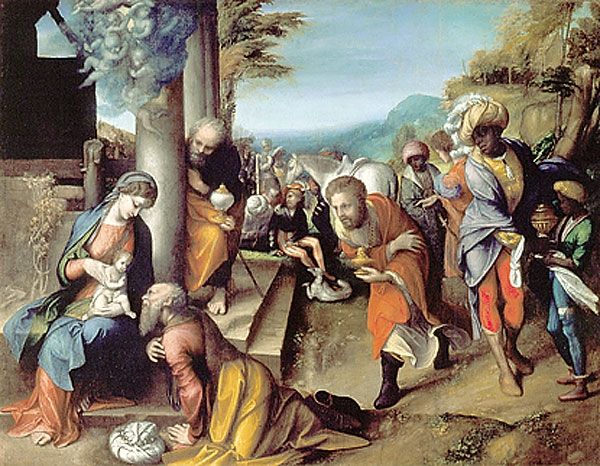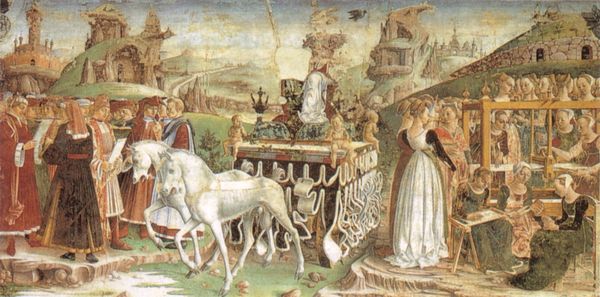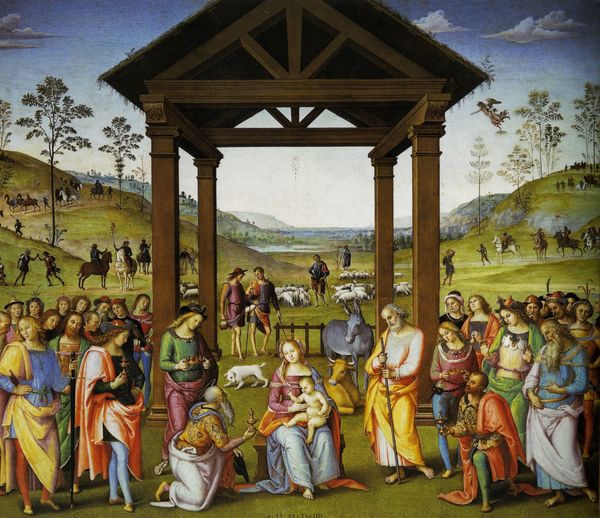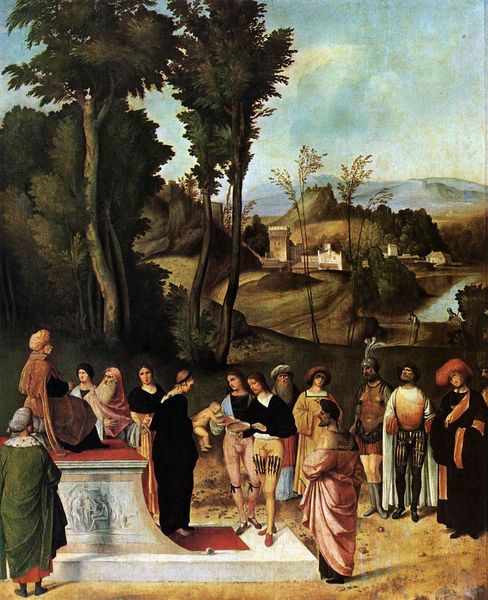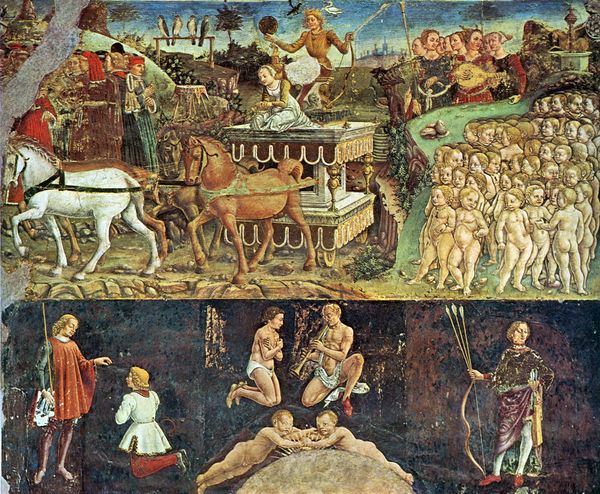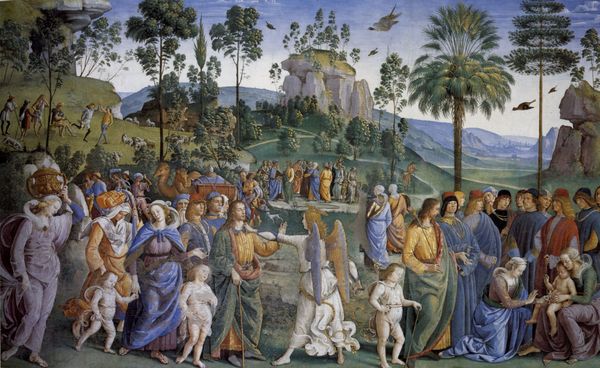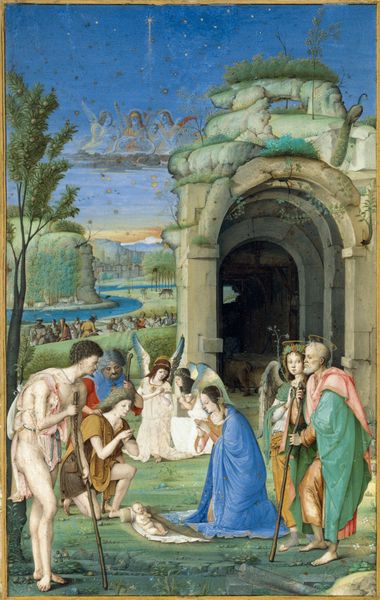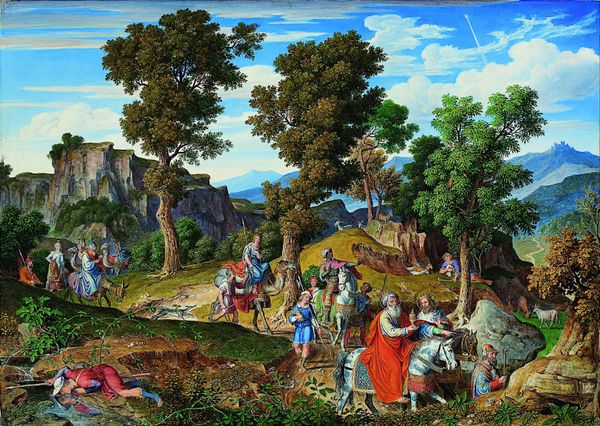
The Story of Nastagio Degli Onesti - The Banquet in the Pine Forest 1483
0:00
0:00
sandrobotticelli
Museo del Prado, Madrid, Spain
panel, oil-paint
#
portrait
#
panel
#
narrative-art
#
oil-paint
#
landscape
#
figuration
#
oil painting
#
painting art
#
history-painting
#
italian-renaissance
#
early-renaissance
Dimensions: 142 x 83 cm
Copyright: Public domain
Editor: This panel painting, “The Story of Nastagio Degli Onesti - The Banquet in the Pine Forest” was painted around 1483 by Sandro Botticelli, using oil on panel. It's packed with figures in a lush landscape. What stands out to me is the almost theatrical way the story unfolds across the space; like looking at a stage production. What do you see in this piece? Curator: Well, for me, I'm immediately drawn to consider the materiality. Look at the expense of the oil pigments, the crafting of the wooden panel, likely poplar. Consider the labour involved, not only of Botticelli himself, but the apprentices grinding pigments, preparing the panel...these are luxurious goods! We must ask, for whom was this *made*, and what does that say about the story being told? It wasn't simply ‘art’ then, was it? More like a decorated piece of furniture, but a luxury one intended to shape opinions of wealthy elites. Editor: So, thinking about it less as 'art' and more as a constructed, and very expensive, commodity… that shifts things. Do you think the violent narrative serves a particular function in that context? Curator: Precisely. These panels were commissioned to celebrate or commemorate a wedding, so how might this narrative – a tale of love, rejection, and violent redemption – function as a conversation piece? As a warning about proper social behavior among the elite, about marriage as social capital? We also have to consider Botticelli’s workshop practices, was this all him, or delegated in part to others in the shop? It's crucial to understand the conditions of its creation to truly unpack its meaning, especially class relations embedded in the labor to make it. Editor: That's a perspective I hadn't considered, focusing on the conditions that produced the work rather than simply the image itself. Thinking about art as material culture helps unpack so much. Curator: Absolutely. It pushes us to go beyond simple aesthetics and consider art as embedded in a complex web of social and economic relations.
Comments
No comments
Be the first to comment and join the conversation on the ultimate creative platform.

